What's New
Displaying results 1871 - 1880 of 4911
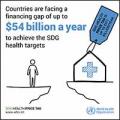
Resource | Infographics,
Infographics on Sustainable Development Goals (SDGs): Financial Gap to Achieve the SDG Health Targets
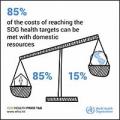
Resource | Infographics,
Infographics on Sustainable Development Goals (SDGs): Meeting Health Targets via Domestic Resources

Resource | Infographics,
Infographics on Sustainable Development Goals (SDGs): Good Health and Well-Being
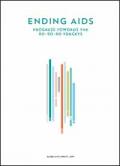
Resource | Publications,
Families, communities, cities and countries have witnessed a transformation, with access to HIV treatment accelerating in the past three years. A record 19.5 million people are accessing antiretroviral therapy, and for the first time more than half of all people living with HIV are on treatment. More countries are paying for HIV treatment themselves. More people living with HIV are employed, more girls are in school, there are fewer orphans, there is less ill health and less poverty. Families and communities are feeling more secure.
This report demonstrates the power of the 90–90–90 targets and what can be achieved in a short time. It shows that innovations are possible at every level—from communities to research laboratories, from villages to cities. It illustrates the power of political leadership to make the impossible possible.
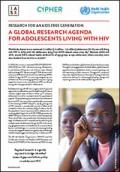
Resource | Publications,
Adolescents living with HIV are in urgent need of improved approaches to address their specific health needs. Evidence indicates higher rates of loss to follow up, and poor adherence, as well as increased needs for psychosocial support. This population group continues to be underserved by current HIV services and have significantly worse access to and coverage of ART. Despite a rapidly growing area of HIV research, a considerable amount of effort is still needed to inform the understanding of what works for this population. Improving outcomes for adolescents and reaching global targets for an AIDS FREE generation by 2030 will require evidence-based interventions and policies. These should take into consideration the developmental stage of adolescence while comprehensively addressing the multiple needs of adolescents living with HIV and actively engaging them in their own healthcare.
To overcome these barriers and challenges in a context of increasing funding constraints, targeted research is urgently required to bridge identified research gaps and inform policy on adolescent HIV.

Resource | Publications,
Media engagement was one of the key elements of the 20-month project, Increasing Access To Justice For LGBTI Communities In Indonesia, that OutRight Action International coordinated in 2015 and 2016. Given the impact of unbalanced media reporting on LGBTI communities, including incitement to violent discrimination, one of OutRight's Indonesian partners, Kemitraan, a national organization on good governance and government reform did a media mapping to show how mainstream media, community media and social media portrayed LGBTI issues and LGBTI people. The findings show that biased negative reporting bias spread intolerance. False media stories about LGBTI people increased the Indonesian public's fears about LGBTI people as a national security threat and a danger to society.

Resource | Publications,
A new effort is urgently needed to reinvigorate primary HIV prevention. It needs to build on lessons learned from previous prevention initiatives and other successful initiatives, such as the Global plan towards the elimination of new HIV infections among children by 2015 and keeping their mothers alive, which successfully galvanized efforts to reduce new child infections.
The overarching goal of the Global HIV Prevention Coalition will be to strengthen and sustain political commitment for primary prevention by setting a common agenda among key policy-makers, funders and programme implementers. It also will seek to establish accountability for delivering services at scale. Success requires country ownership and commitment plus global and national actions. The Prevention Coalition will launch the Prevention2020 Road Map, engage stakeholders and leaders in its effective implementation, monitoring, and annual reporting on progress.
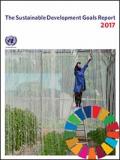
Resource | Publications,
The Sustainable Development Goals Report 2017 reviews progress made towards the 17 Goals in the second year of implementation of the 2030 Agenda for Sustainable Development. The report is based on the latest available data. It highlights both gains and challenges as the international community moves towards full realization of the ambitions and principles espoused in the 2030 Agenda.
While considerable progress has been made over the past decade across all areas of development, the pace of progress observed in previous years is insufficient to fully meet the Sustainable Development Goals (SDGs) and targets by 2030. Time is therefore of the essence. Moreover, as the following pages show, progress has not always been equitable. Advancements have been uneven across regions, between the sexes, and among people of different ages, wealth and locales, including urban and rural dwellers. Faster and more inclusive progress is needed to accomplish the bold vision articulated in the 2030 Agenda.
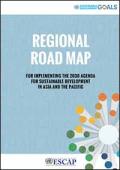
Resource | Publications,
Implementation of the Sustainable Development Goals requires national, regional and international cooperative endeavours. The aim of this regional road map is to facilitate cooperation at the regional level, supported by the secretariat and other United Nations entities through the Asia-Pacific Regional Coordination Mechanism as appropriate.
The road map places particular emphasis on supporting the implementation of the 2030 Agenda for Sustainable Development by developing countries, in particular by least developed countries, landlocked developing countries, small island developing States, countries in conflict situations and post-conflict countries and other countries with special needs.
In line with the 2030 Agenda, the objective of the road map is to promote the balanced integration of the three dimensions of sustainable development through regional cooperation in a set of priority areas that support effective pursuit of sustainable development by member States.
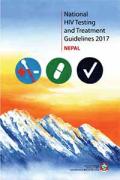
Resource | Guidelines,
Based on the WHO "Consolidated guidelines on HIV testing services" that recommend training lay providers in using rapid diagnostic tests, independently to conduct safe and effective HIV testing services, innovative service delivery approaches in "Nepal HlVision 2020" include intensified testing to reach key populations through facility-based outreach and community-led in-reach; linking testing to treatment.
Since the inception of Nepal's anti-retroviral treatment (ART) programme in 2004, under the leadership of the Ministry of Health, National Centre for AIDS and STD Control, the country has taken many measures to scale up ART with the objective of reaching everyone who needs treatment. Development of these "National HIV Testing and Treatment Guidelines 2017" is another milestone.
Following the directives of the National HIV Strategic Plan 2016-2021, these Guidelines support the Test, Treat and Retain continuum, based on the "WHO Consolidated Guidelines on the use of Antiretroviral Drugs for treating and preventing HIV infection", published in 2016. 'Test-and Treat' keeps infected people healthy and living longer, and dramatically reduces the risk of HIV transmission to others.





